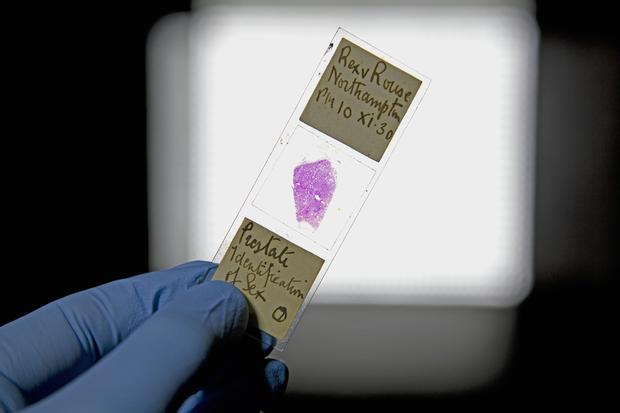On November 6th, 1930, a man was murdered in a car fire in in Hardingstone, Northamptonshire. Alfred Rouse was convicted of the crime and hanged at Bedford Gaol in March 1931. Home Office-appointed pathologist Bernard Spilsbury and another local pathologist, limited by the science and technology of their day, were unable to identify the victim due to the burns, but they reported that lavender colored material and light brown hair were found at the scene and they wrote that the victim’s jawbone was removed to assist with possible identification and tissue samples taken for microscopical examination.
More recently, the family of William Briggs say he left his family home in London for a doctor’s appointment at around the same time the crime was committed and was never seen or heard of again. The relatives of Briggs wanted to verify earlier generations’ belief that their ancestor may have been the victim in the Blazing Car Murder. Last year, they they approached Northamptonshire Police in an attempt to put the 83-year-old mystery to rest and finally reveal the identity of the victim. They met with the Force’s curator and archivist Richard Cowley, discussed the story of the murder and were shown artifacts relating to the crime which, at the time received worldwide attention.
And there was some evidence that could be more useful to science now. Two of the tissue samples taken from the victim are still in existence and archived in The Royal London Hospital Museum: one from the prostate to confirm he was a male, and another from the lung to determine whether or not the victim was already dead before the fire was started.

Who was the victim in the Blazing Car murder? Sample taken by Sir Bernard Spilsbury. Credit: University of Leicester
With the help of Northamptonshire Police, the family contacted University of Leicester academic Dr. John Bond. He and Dr. Lisa Smith negotiated with The Royal London Hospital museum to allow one of the remaining tissue samples to be examined. The slide was released with the approval of Professor Richard Trembath, at Queen Mary College University of London, which obtained it when the old Department of Forensic Medicine formed part of The London Hospital Medical College, which merged with Queen Mary College in 1995.
The team obtained a full single male mtDNA profile from the slide to compare with mtDNA from the family. Mitochondrial DNA is wholly inherited from the maternal line so it is essential to have an unbroken maternal line of descendants to test.
What was the result? You'll have to watch the BBC's "The One Show" to find out. They're out to solve mysteries, sure, but they want to get some good television out of it also.





Comments